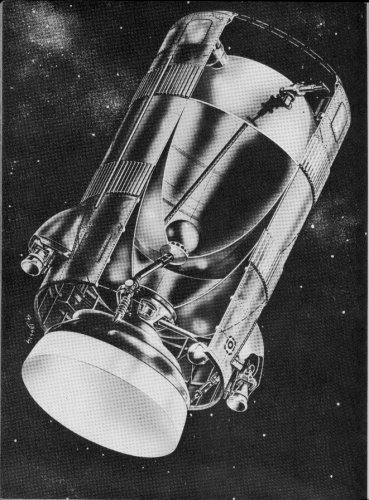- Joined
- 1 November 2009
- Messages
- 638
- Reaction score
- 410
I found this in
Rockets and Spacecraft of the World
by Michael Chester
W. W. Norton & Co. Inc. 1964
The caption with the image
Rockets and Spacecraft of the World
by Michael Chester
W. W. Norton & Co. Inc. 1964
The caption with the image
OPHOS 1E, the West German design for an upper-stage craft that would use a fluorine/hydrogen propellant combination; this artist's conception shows the main rocket nozzle and the two smaller vernier rockets on either side. The high energy produced by the fluorine/hydrogen combination makes this a very advanced craft. It is intended as a third stage for the all-European space system of the future, sometimes called Black Prince and sometimes called the ELDO launch vehicle, from the first letters of European Launcher Development Organization.

